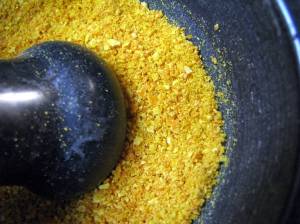Waste not
The cost of food is a tricky, tricky thing. Good food (fair, clean, local, etc) should cost more because the folks producing food responsibly deserve to earn a living. But people living on low incomes need to be able to afford healthy food, too. It sounds like a complete paradox, but both issues boil down to the same issue: government subsidies of commodity crops make these crops both more profitable grow than fruits and vegetables, and cheaper to buy (as processed junk food).
But that’s not what I want to get into right now. You can learn more about federal subsidies and the Farm Bill here, here, or here. And while the Farm Bill desperately needs some revision, there also need to be some changes from the bottom up. A lot of people who could afford to support local, sustainable, fairly-produced food choose not to because of the cost. So consider this post one more reason why it’s worth it to spend a little extra.
For a while, I tried to save money by shopping according to the Environmental Working Group’s “Dirty Dozen” and “Clean 15” lists. These lists rank produce by relative pesticide load; The idea is that if you can only afford to buy some organic produce, you spend the extra money where it counts. The thing is, a lot of the veggies and fruits on the “Clean 15” list are ranked that way because you peel them before eating and discard the contaminated outer layer. But for me, it’s worth it to spend a bit more on organic onions and garlic because I use the skins and scraps for making veggie stock. I don’t bother peeling organic potatoes, carrots, or cucumbers, which makes them more nutritious. Carrot ends go into the stockpot, too. When you believe in the quality of your food it’s hard to waste any part of it. So even if you’re spending more, those food dollars are going further.
Most recently, I’ve been chowing down on oranges. Since they’re pretty far from local, I have all the more reason to put the peel to work:
I’ll use this ground orange peel when I don’t have any fresh oranges to zest. To make it, peel a few oranges, trying to keep the pieces on the big side. Use a spoon to scrape off as much of the bitter pith as possible, dry, and grind! I used a dehydrator because I live in the soggy Pacific NW, but you might have luck with air-drying.
Make orange sugar by mixing the zest of one orange with a cup of sugar in a food processor. I can’t wait to sprinkle it on baked goods or try it in herbal tea, but I think we’ll use most of it as dutch baby topping. Yum!



just saw a suggestion to steep peels in vinegar for two weeks. then dilute to use as a general household cleanser.
Yup, I’ve been doing this with grapefruit peels. It doesn’t quite cover up the vinegar smell, but definitely helps!